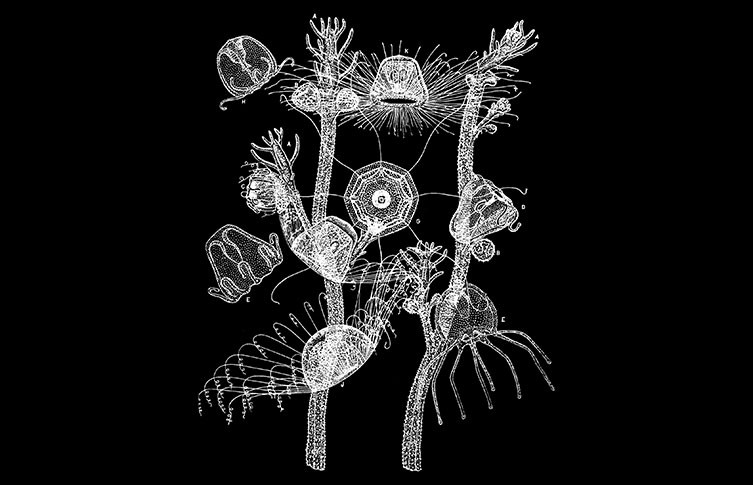
The Immortal Jellyfish
The life cycle of most jellyfish species is similar. Museum curator Miranda Lowe explains, 'They have eggs and sperm and these get released to be fertilised, and then from that you get a free-swimming larval form.
'The larva will move about in the current until it finds a hard surface to establish itself. It will then start to mature and grow. Larvae mature into polyps, which will then bud off and mature into young jellyfish.'
An adult jellyfish is known as a medusa. Jellyfish belong to a group called Cnidaria, which also includes sea anemones and corals. As animals, they are subject to the cycle of life and death - though one species is known to bend the rules.
This illustration shows the different life stages of Turritopsis jellyfish. Image via Wikimedia CommonsThe hydrozoan Turritopsis dohrnii, an animal about 4.5 millimetres wide and tall (likely making it smaller than the nail on your little finger), can actually reverse its life cycle. It has been dubbed the immortal jellyfish.
When the medusa of this species is physically damaged or experiences stresses such as starvation, instead of dying it shrinks in on itself, reabsorbing its tentacles and losing the ability to swim. It then settles on the seafloor as a blob-like cyst.
Over the next 24-36 hours, this blob develops into a new polyp - the jellyfish's previous life stage - and after maturing, medusae bud off. This phenomenon has been likened to that of a butterfly which, instead of dying, would be able to transform back into a caterpillar and then metamorphose into an adult butterfly once again.
The process behind the jellyfish's remarkable transformation is called transdifferentiation and is extremely rare.
Medusa cells and polyp cells are different - some cells and organs only occur in the polyp, others only in the adult jellyfish. Transdifferentiation reprogrammes the medusa's specialised cells to become specialised polyp cells, allowing the jellyfish to regrow themselves in an entirely different body plan to the free-swimming jellyfish they had recently been. They can then mature again from there as normal, producing new, genetically identical medusae.
This life cycle reversal can be repeated, and in perfect conditions, it may be that these jellyfish would never die of old age.
'We might be distracted watching much larger jellyfish, but the tiny things such as this can inform so much of our science about these animals,' says Miranda.
Advertisements
06 December 2022
Advertisements



